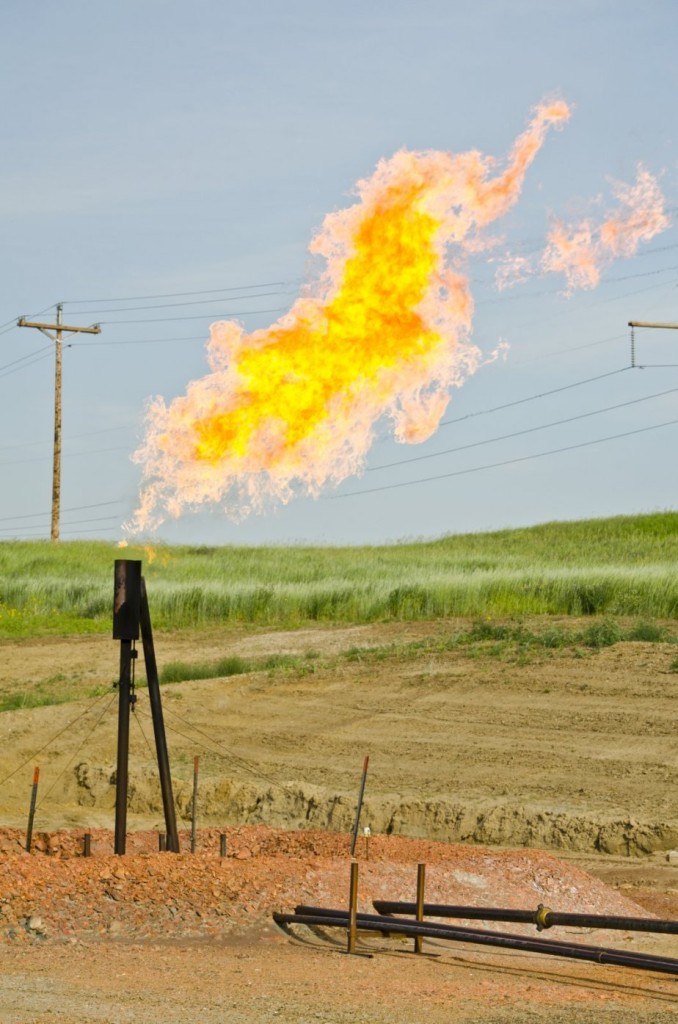Natural Gas Flaring

I grew up in Oklahoma and I remember seeing natural gas flares as I was growing up. After moving away from there I thought the practice had gone away because it is wasteful and polluting (Ponca City, OK used to small like rotten eggs).
On the way from Monahans, Texas to Carlsbad, NM, I was surprised to see 12 natural gas flares in Pecos and north of Pecos. After I left Carlsbad, I saw 20 more.
From the Union of Concerned Scientists:
In 2011, the World Bank estimated that 5.3 trillion cubic feet of natural gas (25% of total U.S. consumption) is flared annually, mostly in developing countries that do not have gas processing infrastructure. However, gas flaring has increased in the United States in recent years as oil production has expanded rapidly in places like the Bakken shale in North Dakota.
Flaring of gas contributes to climate change and impacts the environment through emission of CO2, black carbon and other pollutants. It also wastes a valuable energy resource that could be used to advance the sustainable development of producing countries. For example, if this amount of gas were used for power generation, it could provide about 750 billion kWh of electricity, or more than the African continent’s current annual electricity consumption.
The World Bank would like to see Zero Routine Flaring by 2030.
I understand that the gas is flared because it comes along with the oil and it is not economically viable to save it. It will be economically viable in the future but corporations want their profit now. Federal regulations allow oil companies to flare gas without paying royalties if it is the only way they can economically extract oil from a well. This royalty-free flaring resulted in a $66 million subsidy over the six years of the study for oil and gas companies in North Dakota alone. So the tax payer subsidizes the corporations yet again.